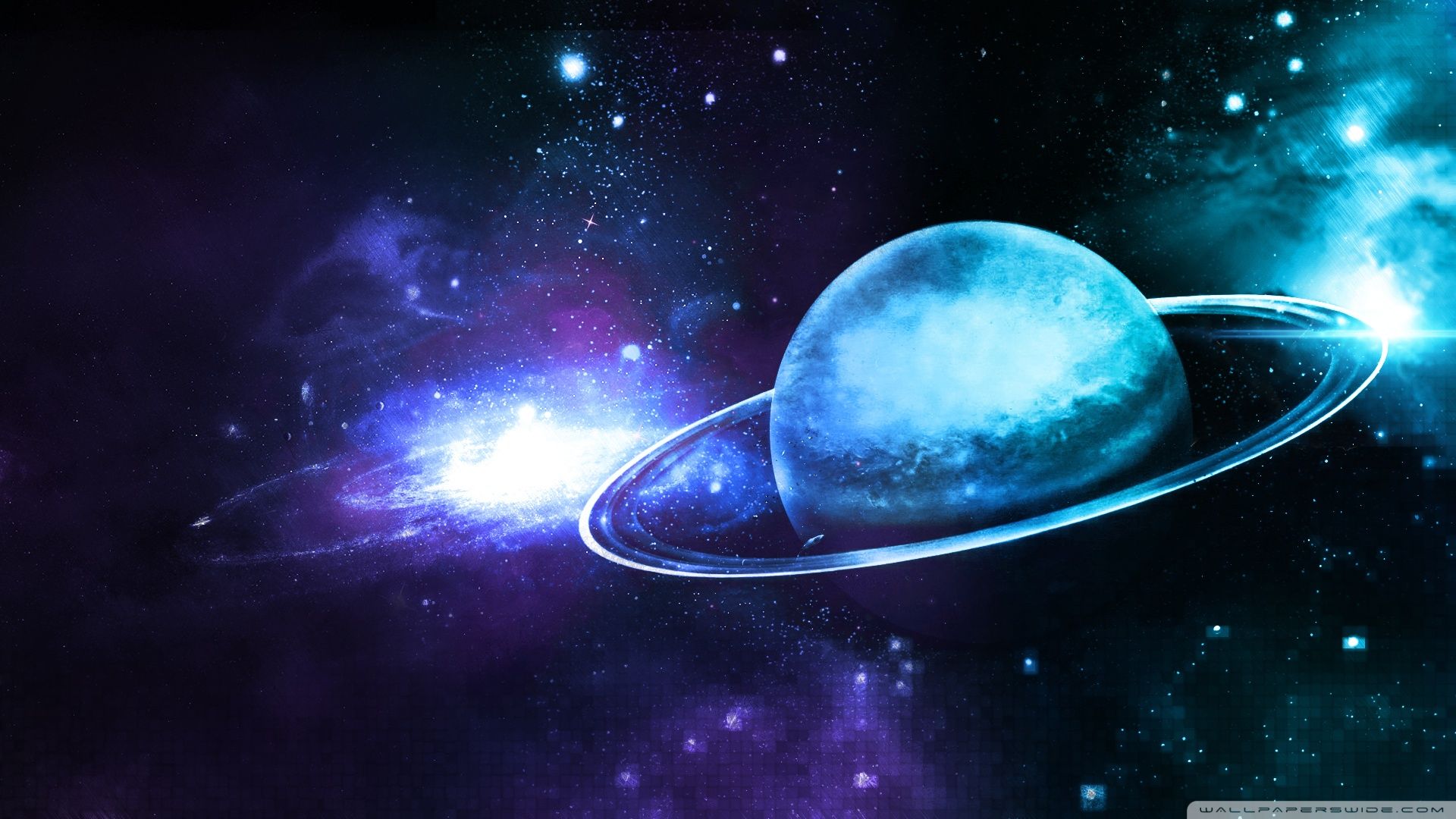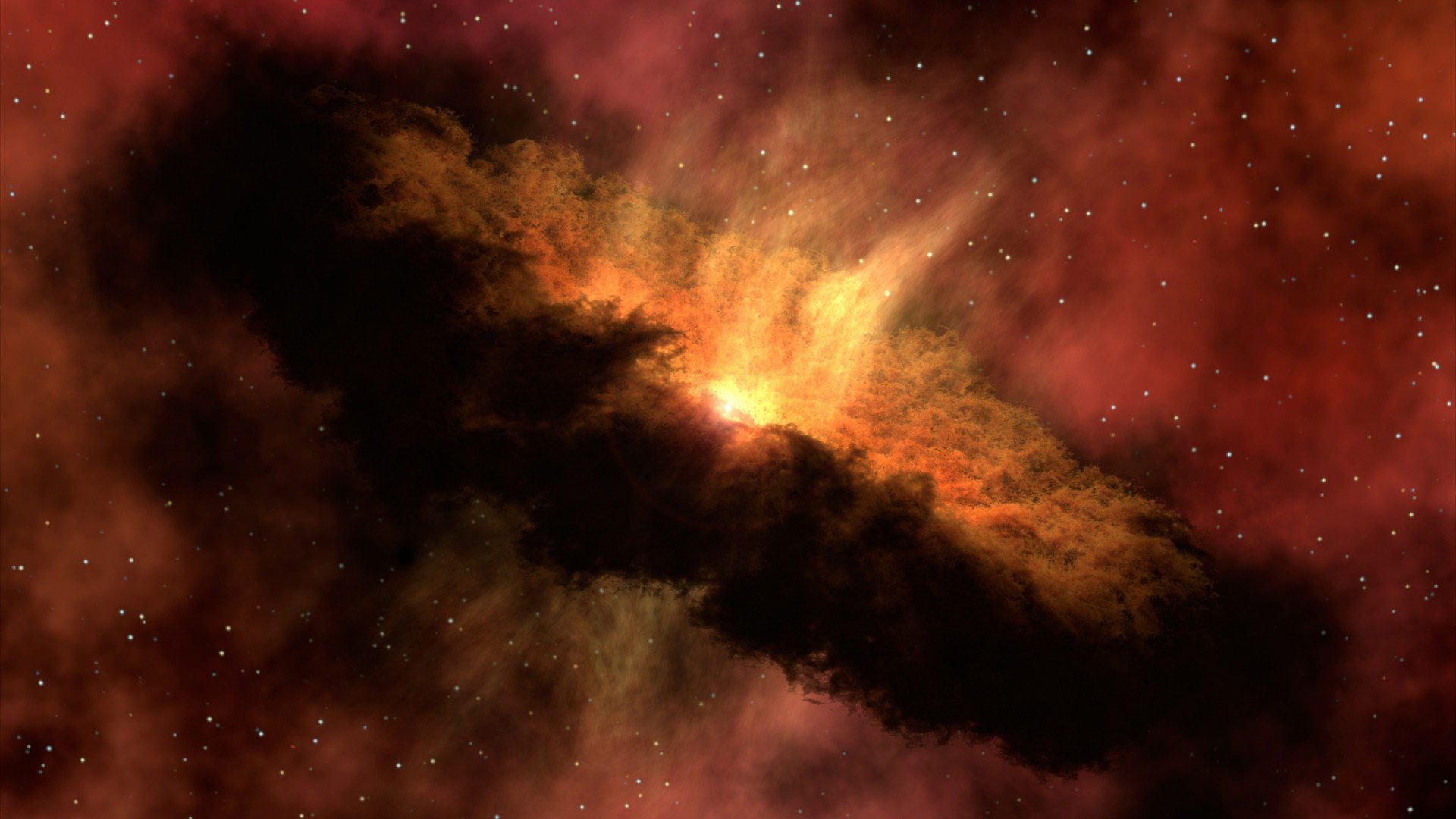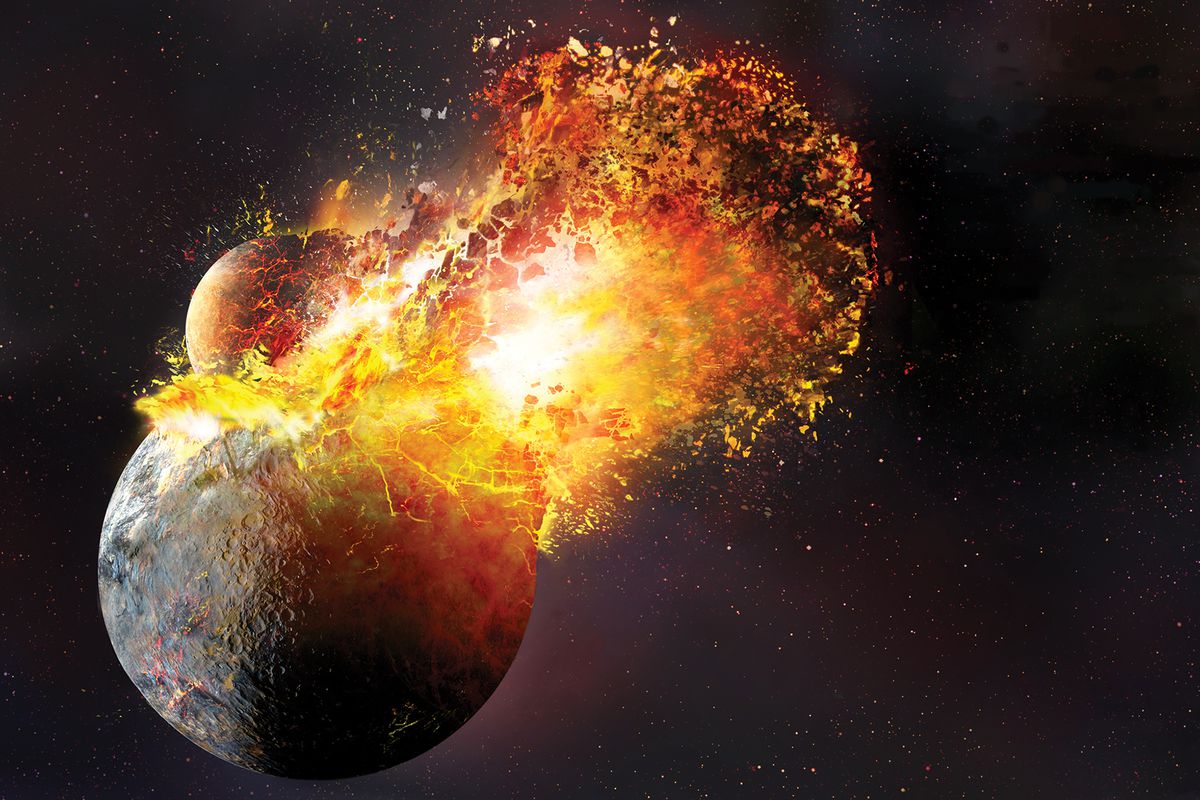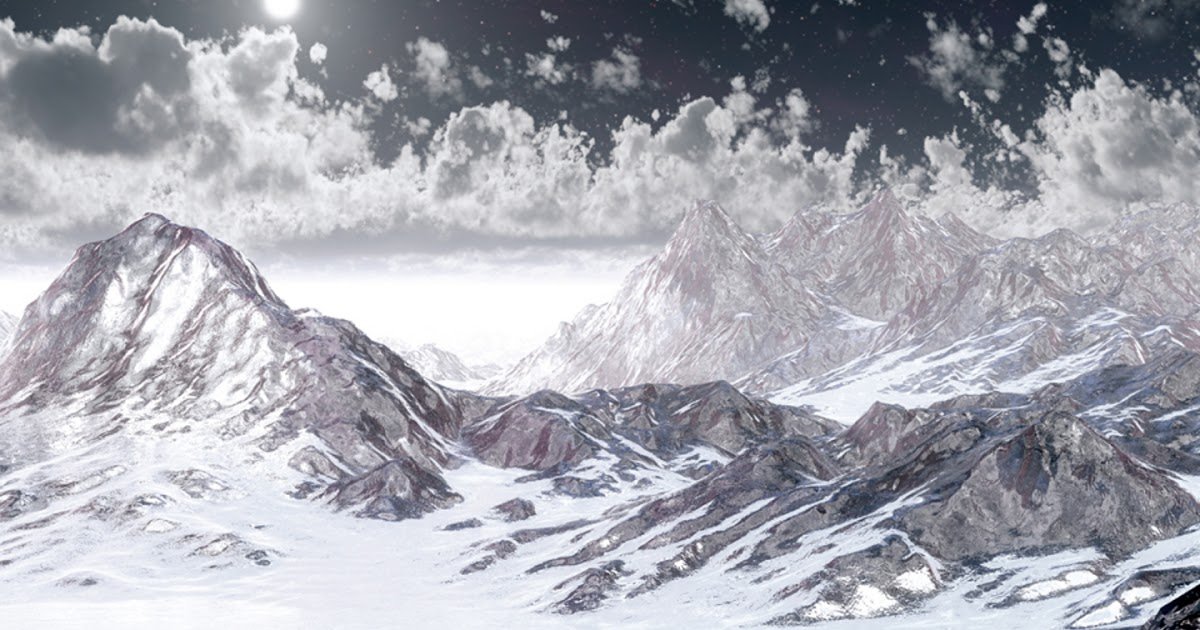Astronomers have a theory on how the planet Uranus got flipped onto its side. They used detailed computer simulations showing a body about twice the size of Earth must have slammed into Uranus between 3 to 4 billion years ago. The impact created an oddity in the solar system – a planet that rotates on its side.
One of These Things Is Not Like the Others
When a solar system is formed it all starts with a massive cloud of gas and dust. The cloud swirls as it become more dense and, eventually, the sun forms in the center with the rest of the gas and dust swirling around it. The sun contains about 99.8 percent of the mass in the solar system, and as the remaining 0.2 percent swirls around it, clumps begin to form into planets as we know today.
As they form, the rotation of the gas cloud is imparted to the planets. So, all of the planets rotate the same way, except for Uranus (and Venus, which was likely struck by an asteroid).
The planets aren’t all exactly alike; Earth is tilted on its axis a little, giving us seasons, and so are Jupiter, Neptune, and Saturn, to varying degrees. But they’re still oriented more or less the same as the rest of the planets and moons. But Uranus isn’t. It’s tilted on its side relative to its fellow planets, by about 98 degrees.
I’ve Fallen and I Can’t Get Up
For years, evidence has been building that supports a collision between Uranus and a body about twice the size of Earth. This most recent study builds on that evidence and comes from a group of scientists led by Jacob Kegerreis from Durham University.
According to an abstract from their presentation at the AGU, they “performed a suite of smoothed particle hydrodynamics (SPH) simulations to investigate in detail the results of a giant impact on the young Uranus.”
SPH is a computational method developed in the 1970s to study astrophysical problems. It’s also used in ballistics, volcanology, and oceanography.
“We ran more than 50 different impact scenarios using a high-powered super computer to see if we could recreate the conditions that shaped the planet’s evolution. Our findings confirm that the most likely outcome was that the young Uranus was involved in a cataclysmic collision with an object twice the mass of Earth, if not larger, knocking it on to its side and setting in process the events that helped create the planet we see today,” said Kegerreis.
The results of their simulations explain not only Uranus’ obliquity, but also some of its other properties:
- Not only does Uranus rotate on its side, but so do its five largest moons.
- Its magnetic field is also lopsided, and doesn’t go out the poles.
- It’s the only planet where the interior heat doesn’t escape from its core.
- The collision that made Uranus what it is today happened two or three billion years ago, but according to the simulation it was over in a matter of hours.
The simulation shows that a body about twice the size of Earth slammed into Uranus, tilting it to about 98 degrees. The object that slammed into it was made of rock and ice, and some of that material fell into Uranus’ core. According to the abstract not all of it did, and that explains why Uranus doesn’t shed heat from its core.
“Furthermore, most of the impacted ice and energy is deposited in a hot, high-entropy shell at a radius of 3 R. This could explain Uranus’ observed lack of heat flow from the interior…”
The abstract also says that this could help explain the planet’s weird magnetic field. While Earth’s magnetic field is tilted from its geographic poles by 11 degrees, Uranus’ field is tilted by 59 degrees.
The simulation also suggests that the moons of Uranus formed after the collision. There was likely a ring of debris as the result of the impact, and the moons formed from that debris. That’s why the five largest moons rotate on the same axis as the planet.
Uranus and the solar system’s other ice giant, Neptune, are the least studied planets in our system. There’ve been no dedicated missions to either planet, though Voyager 2 did visit them briefly in the late 1980’s.
Scientists rely on observation and computer simulation to understand them both. This latest study builds on other evidence pointing to impacts as the cause of Uranus’ tilt. Once such study suggested multiple impacts were responsible, but that line of evidence hasn’t persisted.
Afterword
It shouldn’t be a surprise to anyone that an impact is responsible for Uranus’ predicament. The history of the solar system is full of impacts.
The so-called “Late Heavy Bombardment” about 4 billion years ago pelted Earth and the inner solar system with asteroids. Earth’s moon may have been created from a collision between Earth and a doomed planet called “Theia.”
On the moon, Venus, and other bodies, we can see the abundant craters caused by impacts. And, of course, a massive asteroid strike here at home brought on the demise of the dinosaurs and changed the history of our planet forever.
Many missions to Uranus have been proposed, but so far none have been approved. But space scientists are nothing if not patient. Eventually, a dedicated mission to this far-flung neighbor will be launched, and some of this ice giant’s secrets will be unlocked.









Good post. I learn something totally new and challenging on websites I stumbleupon on a daily basis.
It’s always interesting to read through articles from other writers and use something from their websites.
Hello there, I believe your website could possibly be having web browser compatibility issues.
Whenever I look at your site in Safari, it looks fine
however when opening in I.E., it’s got some overlapping issues.
I simply wanted to give you a quick heads up!
Aside from that, fantastic site!
Thanks for one’s marvelois posting! I quite enjoyed reading it, you are
a great author.I will always bookmark your blog and definitely wjll come back laqter in life.
I want to encorage yyou to ultimately continue your great work, have a nice afternoon!
Hmm is anyone else having problems with the pictures on this blog loading?
I’m trying to find out if its a problem on my end or if it’s
the blog. Any responses would be greatly appreciated.
Heya i am for the first time here. I found this board and I find It really useful & it helped me out
much. I hope to give something back and help others like you aided me.
Hey there! I know this is kinda off topic however I’d figured I’d ask.
Would you be interested in trading links or maybe
guest authoring a blog post or vice-versa? My site covers a lot of the same subjects as yours and I believe we could greatly benefit from each other.
If you might be interested feel free to send me an email.
I look forward to hearing from you! Great blog by the way!
Appreciate this post. Will try it out.
Right now it appears like Expression Engine is the preferred
blogging platform out there right now. (from what I’ve read) Is that what you are
using on your blog?
Hi there, You’ve done a great job. I’ll definitely digg it and personally recommend to my
friends. I’m sure they’ll be benefited from this site.